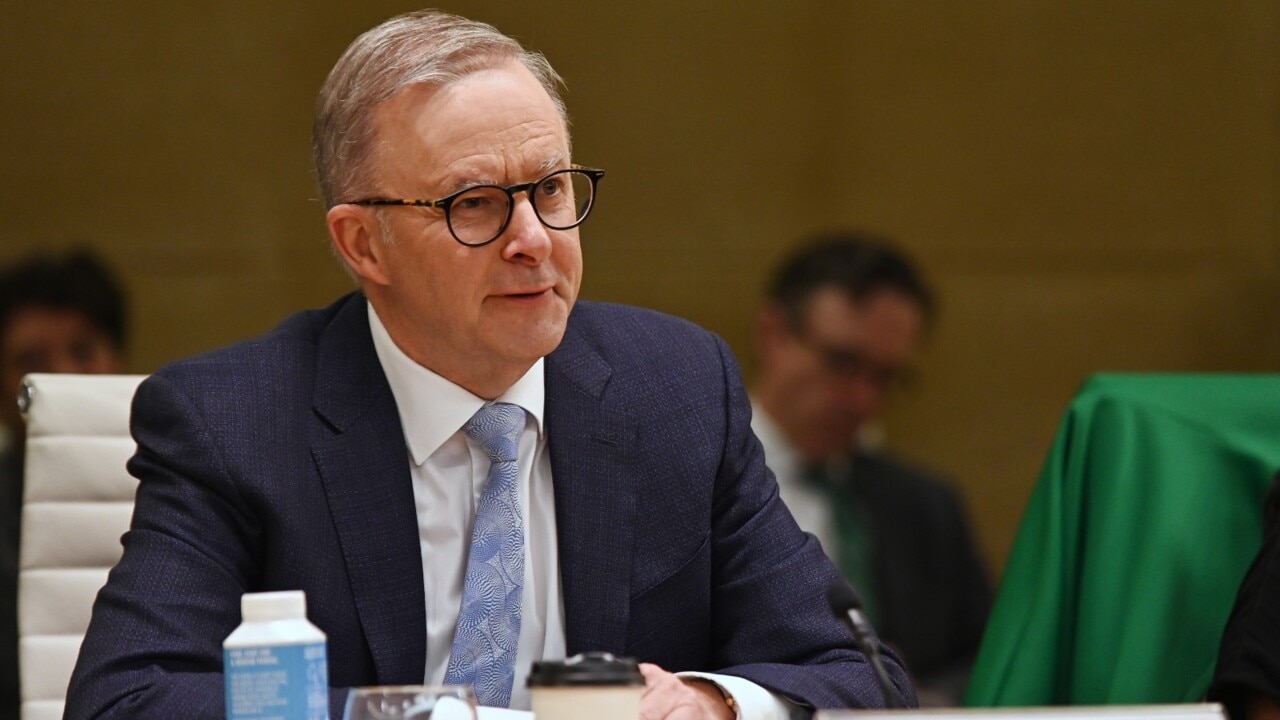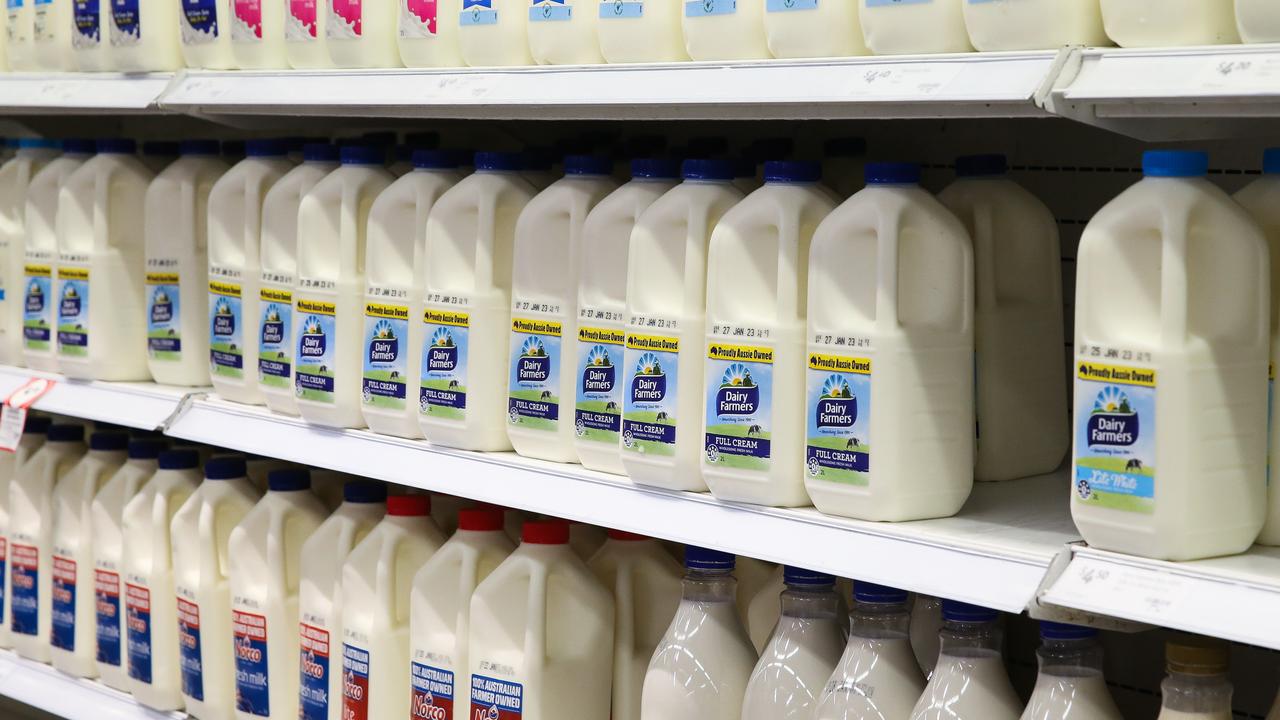Australia and United States to challenge China’s dominance in renewables
The consequences of relying on China for one crucial industry has been exposed as Australia and the US vow to challenge its dominance.

Australia and the United States are moving to ensure China does not entrench its dominance in renewables as the world comes to terms with how dangerous it is to rely on one country for the supply of essential resources.
China already manufactures about 80 per cent of the world’s solar products, and this is expected to increase to 95 per cent within a few years.
As one expert noted: “What happens if there is a fire in one of those factories? The entire global supply chain will be affected.”
The world has woken up to the energy security implications of reliance on countries like Russia for resources like gas, which has skyrocketed in price following the Ukraine invasion, and the downsides of relying on goods from other countries during the Covid pandemic.
Experts are now sounding the alarm on China’s dominance in the manufacture of renewables, especially solar, and the further potential for it to corner the market on batteries.
In particular China processes more than 80 per cent of the world’s rare earth elements, which are used in the manufacture of batteries.
It also dominates the processing of essential minerals such as cobalt, lithium, copper and nickel.
Japan’s Institute of Energy Economics chairman Tatsuya Terazawa said without critical minerals such as nickel, lithium and rare earths, the renewable energy transition would not be possible.
But China is already dominating, not just in the supply of these minerals, but also the processing.
“We need to diversify and we need to reduce the dependence on a single source,” Mr Terazawa told the Sydney Energy Forum on Tuesday.
Japan, more than other countries perhaps, understands the risks of relying on China.
Mr Terazawa said Japan had its supply of rare earths cut off in 2010 after it refused to release the captain of a Chinese trawler operating in disputed waters near the Senkaku islands, whose vessel collided with a Japanese Coast Guard patrol boat.
“Frankly, we were not aware that we were so dependent on rare earths from China,” Mr Terazawa said.
“This embargo almost paralysed our entire industrial activities … and the prices for rare earths skyrocketed.”
Japan’s automotive industry was particularly reliant on rare earths from China and the Japanese Government was forced to release a $US1 billion package to address the crisis. This included funding for developing alternative materials and use-reduction technology, as well as the promotion of recycling of materials, and help for new and existing mines. The country also began stockpiling critical minerals and rare earths.
The Sydney Energy Forum, co-hosted by the Australian Government with the International Energy Agency (IEA), this week identified eight actions to be taken across the Indo-Pacific region, to address the key energy challenges.
They include the acceleration of project investments and partnerships that expand and diversify the supply of critical minerals, as well as the acceleration of industry partnerships and research for the manufacturing capacity of key products such as solar panels.
These actions will be pushed through international forums including COP27, the G7, G20, IEA and IRENA.

China’s kick-start came from US, Australia
Ironically China’s dominance in solar was helped by both Australia and the US.
University of NSW Professor Martin Green said solar manufacturing was previously occurring largely in Europe, Japan and the US, before shifting to China.
“Australia was very heavily involved in that transition,” Prof Green told the forum on Tuesday.
“The first manufacturing in China was established via a series of Australian Chinese joint ventures, usually involving students from my group.”
Prof Green said industry also got a kick-start via finance from US investors.
Contrary to what many believe, he said the Chinese Government had not initially poured money into solar as it thought solar would always be too expensive and it was backing wind instead.
However, it began to see the potential after young, small, private companies established in China began listing on US stock exchanges.
Prof Green said the first of these companies was listed in 2005 on the New York exchange.
“There was a huge appetite for Chinese stocks in the US at that stage, and it was a huge success raising $400 million – apparently the biggest technology floated that year,” he said.
Prof Green said that caused a massive rush of US investors to find other similar Chinese companies to list. Between 2005 and 2010, 10 Chinese based companies listed on the exchange.
Six of those are now in the top 10 solar manufacturers in 2022, Prof Green noted.
“They formed the backbone of the industry,” he said.
A German feed-in tariff, which spread the cost of solar across all customers, also created an ongoing growing market for solar photovoltaics.
The Chinese Government only started providing support for the industry after around 2010, particularly by creating a large market for solar within China.
Prof Green noted the solar industry had developed over 20 years and now the cost of solar was ten times lower.
However, the world is looking at a much faster transition if it is to get to net zero by 2050.
In particular, the production of batteries needs to ramp up significantly and countries like Australia and the US hope to challenge Chinese dominance in this space.
‘China is very good at what they are doing’
While the US and Australia have declared their ambition to become clean energy superpowers, it won’t be easy.
“(China is) very good at doing what they’re doing, they’re producing an extremely high quality product very cheaply, so it’s very difficult for any manufacturing activity in another country to compete on either of those two terms,” Prof Green said.
Asking customers to pay a premium for green products or those manufactured outside of China would also be tough.
Prof Green said there could be ways to differentiate products made outside of China: Europe has talked about placing tariffs on imported products with a high carbon intensity, or there could be certification to confirm no forced labour was used in the production of the product.
However, Amanda Lacaze, chief executive officer of Lynas — the only non-Chinese separator of rare earths — warned that many companies won’t pay more if they don’t have to.
“There is not a single customer who is prepared to pay even $1 a kilo for a premium for their magnets (used in electric vehicles),” she said.
The support of government and co-operation with business is seen as crucial in driving investment if Australia is to encourage local industry.
This includes making it easier to get approvals for mining and other activities.
There is also a “great raw material disconnect” with experts worried there won’t be enough raw materials available to meet demand for the manufacture of things like batteries.
Benchmark Mineral Intelligence chief executive officer Simon Moores said a battery plant may only take 10-24 months to build, but a lithium chemical plant could take up to 10 years.
“(Vehicle manufacturers) that are making big electric vehicle announcements are not speaking to the mining companies,” he said.
In the next ten years, demand for lithium ion batteries and electric vehicles is expected to grow by around 30 per cent, Mr Moores said, but the supply of raw materials is only expected to increase by around 15 per cent.

Climate change and energy minister Chris Bowen said Australia was already the biggest producer of lithium in the world, with 49 per cent of global production in 2020, and would work with India to scale up the manufacture and deployment of solar photovoltaics and electrolysers.
On Tuesday Mr Bowen also signed the Australia-US Net Zero Technology Acceleration Partnership, which will see Australia working with the US on key technologies such as long duration storage, electric vehicles and grid integration.
“We will speed up the development and deployment of energy storage and digital grids,” Mr Bowen said.
“We will work to ensure critical minerals supply chains are secure and resilient – ramping up production, processing and manufacturing capacity.
“These technologies and supply chains will be critical to the roll-out of renewable energy in Australia and the United States.”
Asked whether China was seen as a rival in the race to green energy, US Secretary of Energy Jennifer Granholm told reporters: “I worry that China has bigfooted a lot of the technology and supply chains that could end up making us vulnerable if we don’t develop our own supply chains”.
“From an energy security point of view, it is imperative that nations that share the same values, develop our own supply chains, not just for the climate, which of course is very important, but for our own energy security,” she said.
“We’ve seen what happens when we rely too much on one entity for a source of fuel and we don’t want that to happen. So for to diversify those energy sources and to link up with partners is all part of our energy security.”







